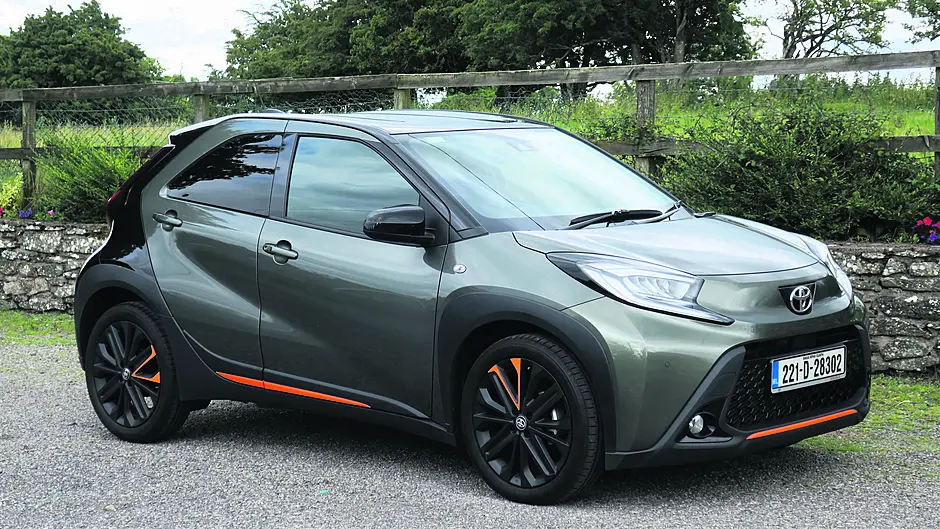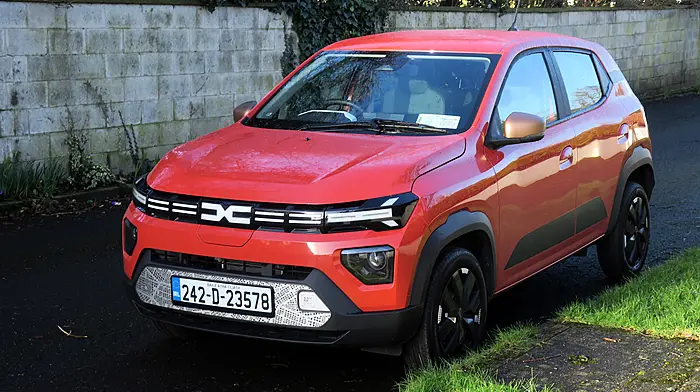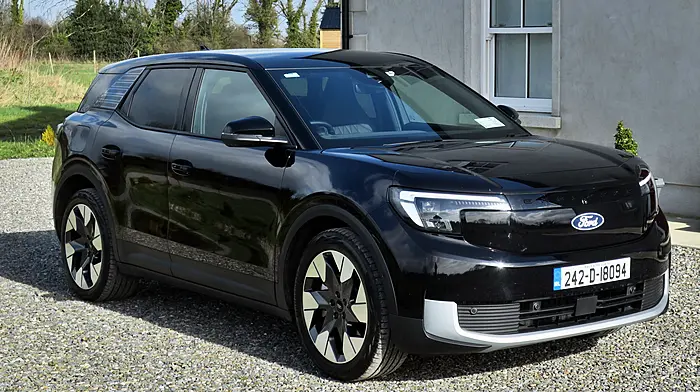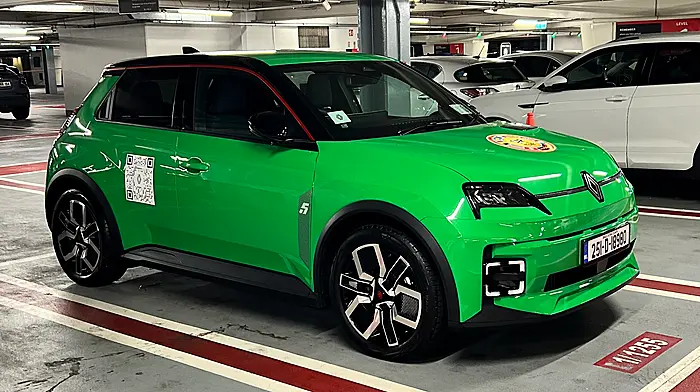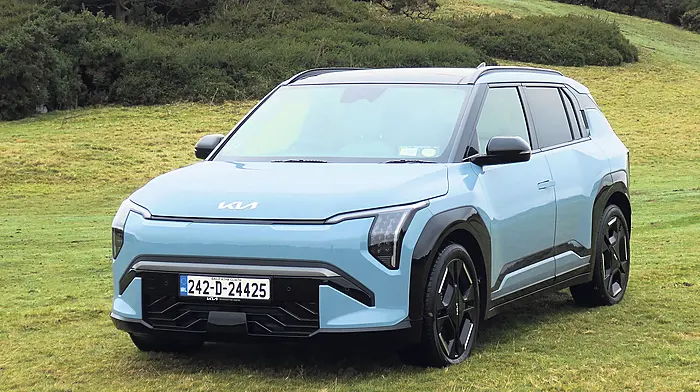VERDICT
What I liked: Fuel-sipping fun in style.
Price: From €20,080
AFTER a bunch of large and very large cars outside my home, it was something of a culture shock to have the Toyota Aygo X for a time. But the Japanese brand’s smallest car in Europe proved to be an engaging little thing.
The Aygo nameplate has been around since 2005, the original being a shared development with Peugeot and Citroen. I have some very fond memories of its debut at the Geneva Motor Show in the days when such excursions were really fun.
It went through two generations, and this latest car could arguably be termed the third. But it’s on a different platform — a shortened version of that used for the current Yaris — and is a solus Toyota development. It’s also tricked up to suggest an SUV in style, hence the ‘X’ which they like you to pronounce as ‘cross’.
It looks fun. Longer, wider, and taller than its predecessors, and with a 38% larger boot space that actually makes it significantly more useful than the small shopping trolley that was Aygo generations 1 and 2. A size comparison puts it between the Hyundai 110 and the Suzuki Swift.
The design is funky and strong, and generates lots of approving looks and smiles. In the special edition colours of green-black with bright orange detail splashes, the Aygo X is certainly a ‘take me home’ standout on any Toyota forecourt.
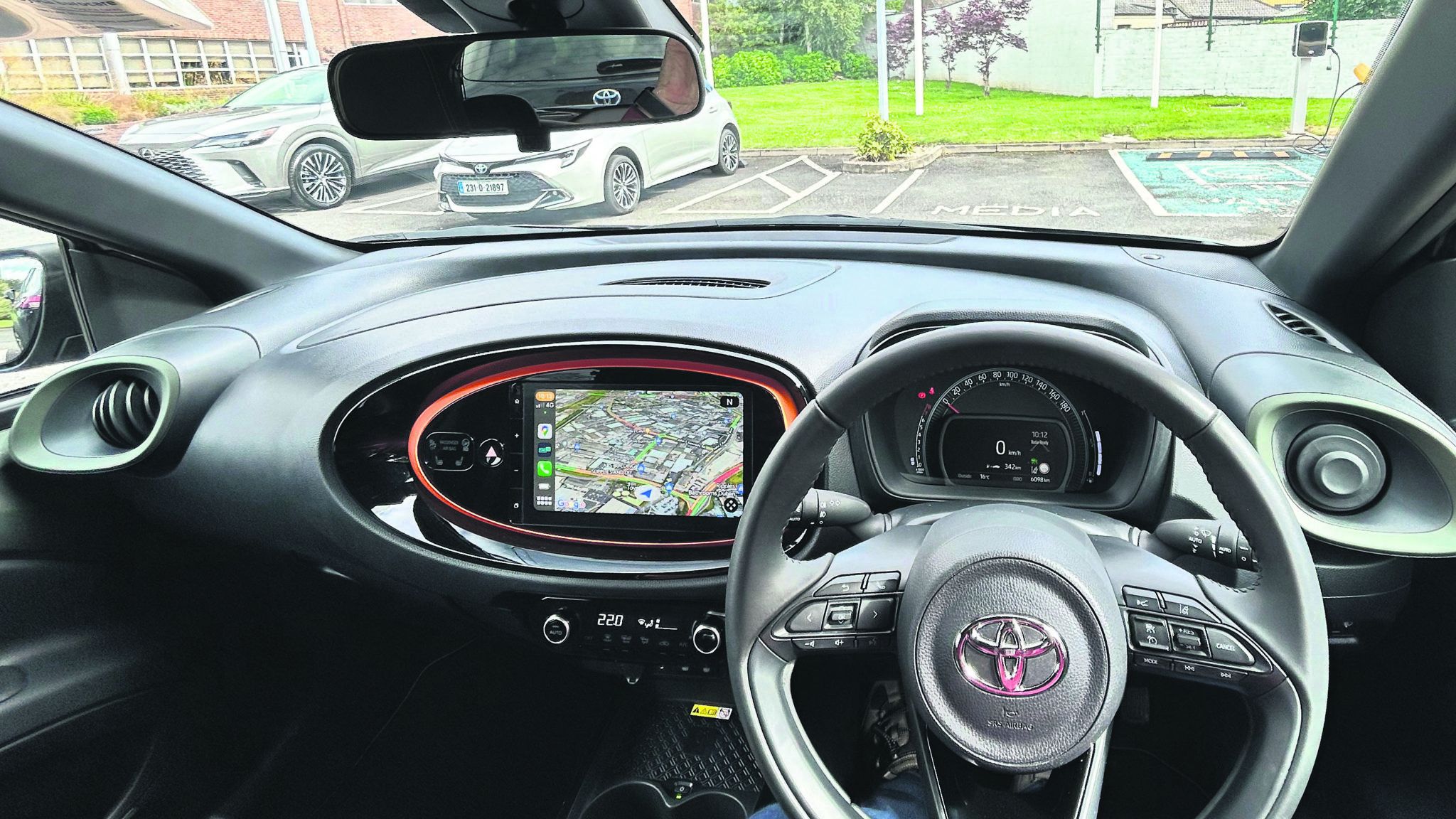
I particularly like the pug- nose treatment and the eagle-eyed lights. The haunched rear and chunky wheel-arch inserts are the tilt to urban crossover that the marketeers want.
The interior is also snappy, with strong curves on the dashboard furniture and in the door trims. Again the orange detailing of the special edition is scattered around, piping the sporty seats design among other splashes. There’s a good large main instruments presentation, an even larger space for the centre infotainment screen integration.
Straightforward climate control knobs and buttons pleased me, of course. Space for the phone and two coffee cups sums up the limits of centre storage.
A traditional pull-up handbrake will please some, though many will miss what is now accepted as convenience of electronic actuation (I was one of the former, though long since converted).
The extra width of this Aygo is noticeable in elbow space and shoulders-rubbing terms for front occupants, but it must be said that there’s just no knee room in the rear for anyone sitting behind a 6’2” lank like me. It would be doable, though, with a more average driver and mainly child rear passengers. But then, this is never going to be bought as a family car.
At this size and price point, Toyota were never going to add the expense of a hybrid option, so the Aygo X is a petrol-only car, with the 1.0 three-pot engine from the predecessor car retained. There’s a five-speed manual as in the review car, and a CVT automatic option is available.
 With so many of my review cars these days being automatic, it was interesting to be manually clutching and shifting again. The engine and transmission are well matched, and as always, the shift is snappy and clean. As I have always found before, using a manual does make you drive a little more strongly, and the snarly sound from the engine belied its actual size.
With so many of my review cars these days being automatic, it was interesting to be manually clutching and shifting again. The engine and transmission are well matched, and as always, the shift is snappy and clean. As I have always found before, using a manual does make you drive a little more strongly, and the snarly sound from the engine belied its actual size.
And its performance — while it might have sounded quite sporty, the 15 or so seconds to 100km/h is ... leisurely? But it felt fun, and the overall effect encouraged rowing and revving through the cogs. It was thrifty; depending on my journeys, I returned between 3.9-4.8L/100km.
The car had all the driver assist you might want, including active cruise control and the dreaded but turn-offable lane assist ... which actually wasn’t as insistently intrusive as many others.
I was smiling when I left the car back, which I had been doing pretty well every time I drove it while in my care. Toyota Ireland’s representative nodded as she took the key. ‘You liked it too?’ It wasn’t actually a question. My face had said it all.

